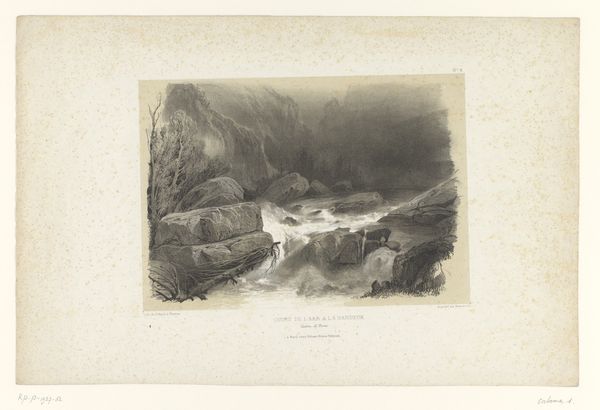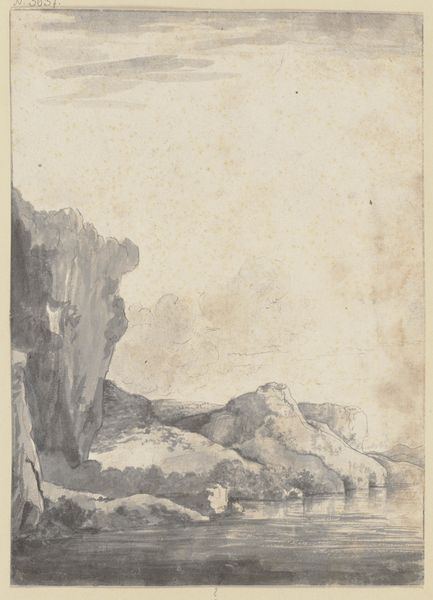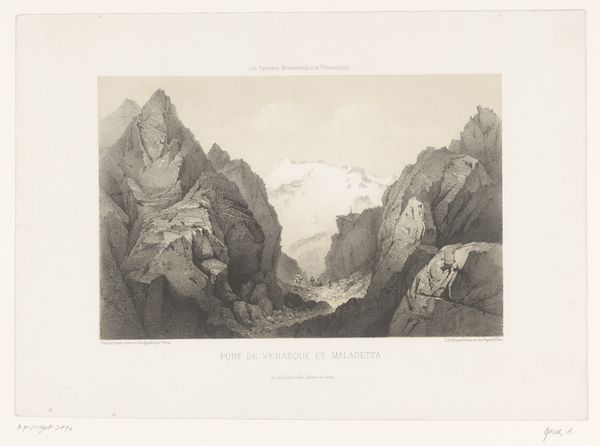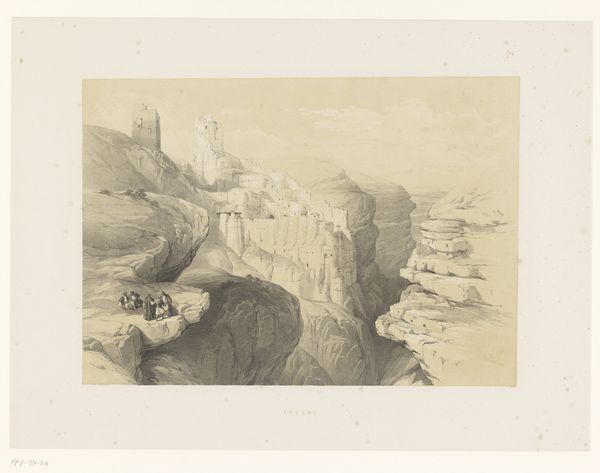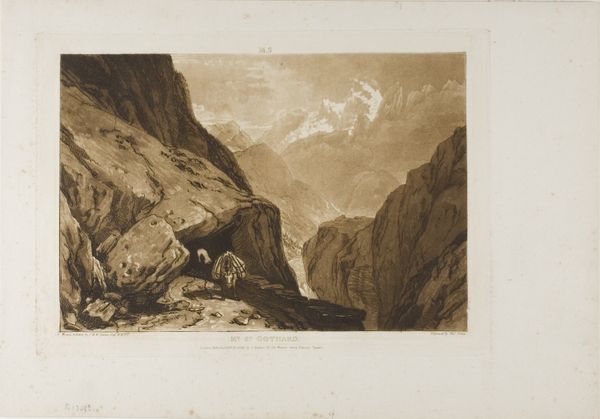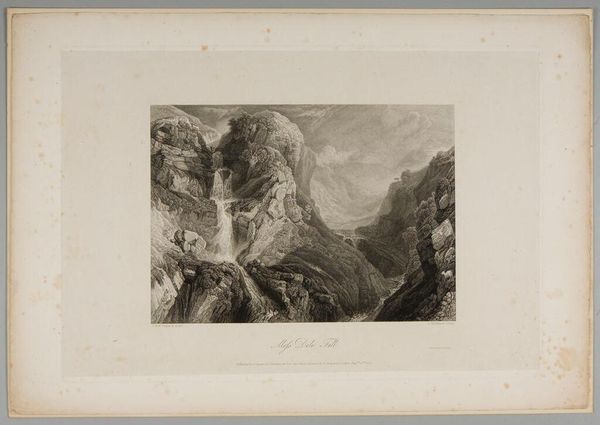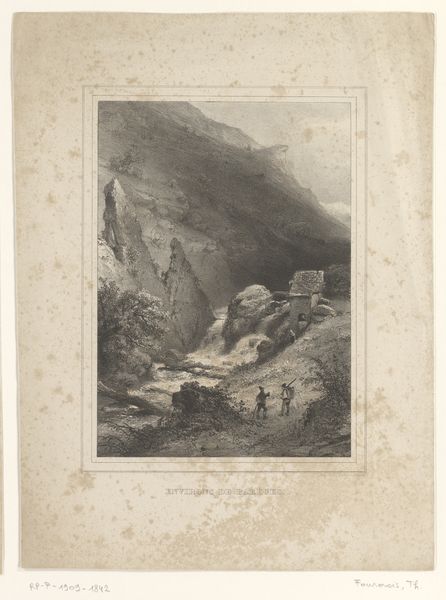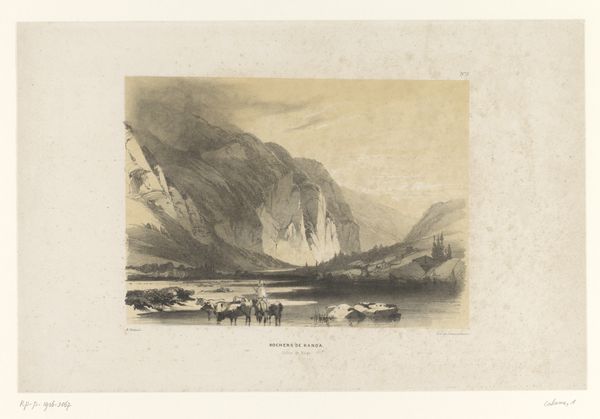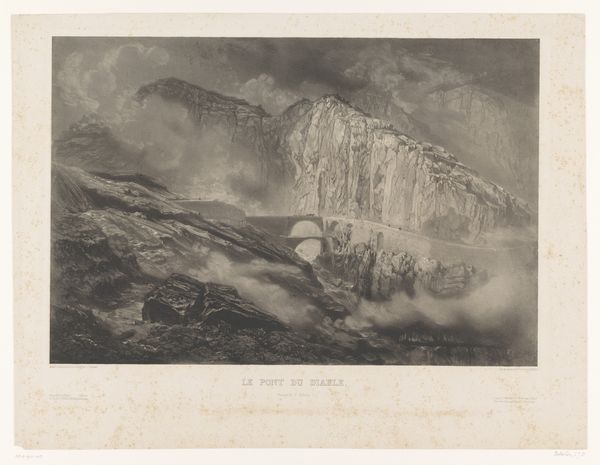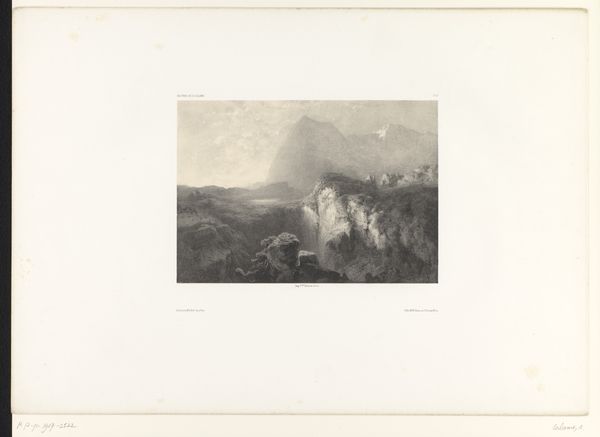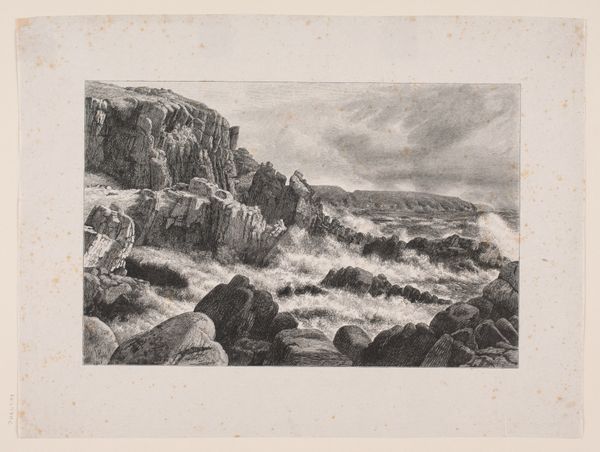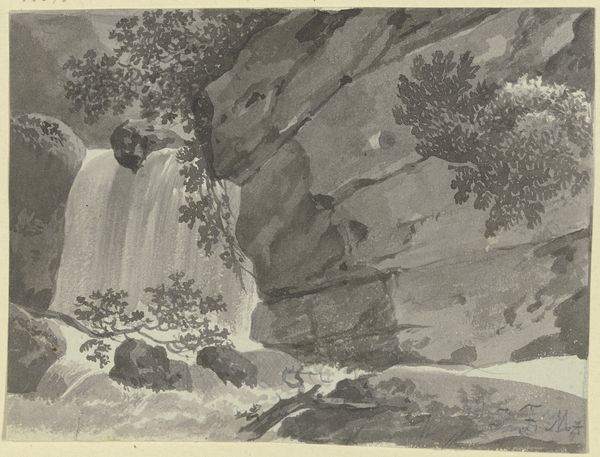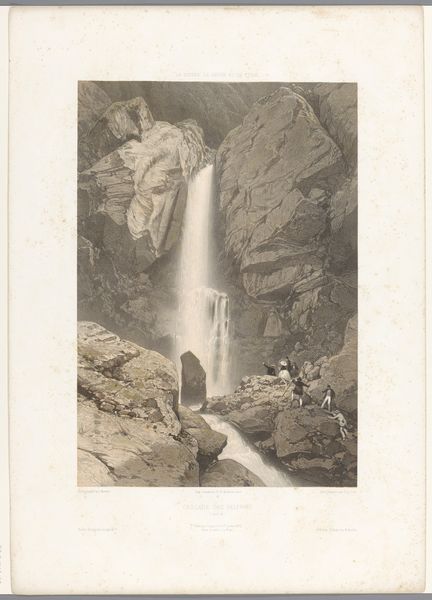
Dimensions: Sheet: 11 13/16 × 16 3/4 in. (30 × 42.6 cm) Plate: 7 5/16 × 10 5/8 in. (18.5 × 27 cm) Image: 5 11/16 × 8 7/16 in. (14.5 × 21.5 cm)
Copyright: Public Domain
Curator: Standing before us is "Salvator Rosa among the Brigands," an intriguing work rendered between 1844 and 1859 by Adolphe Pierre Riffaut. It currently resides here at The Metropolitan Museum of Art. Editor: It's dark and dramatic, almost theatrical in its composition. There's an overwhelming sense of precariousness, that the figures could be swallowed by the landscape. Curator: Precariousness resonates profoundly. This piece taps into romantic notions of the artist as an outsider, aligning Rosa's identity with those living outside societal norms, like brigands. We might read this as an assertion about the inherently radical potential within the artist's perspective, always questioning structures. Editor: Let's talk about process. This isn’t paint on canvas but rather what appears to be a charcoal drawing printed onto paper. The means of reproduction complicate its status as either singular artistic creation or commodity. The detail is amazing, considering that. Look at the way the artist suggests texture in the rocks. Curator: The medium amplifies our reading of it. The use of printmaking positions this landscape beyond pure aesthetics; the work implicates distribution and accessibility of subversive narratives that elevate the marginalized within visual culture. Romanticism always holds political agency, doesn’t it? Editor: The ruggedness and grandeur depicted is interesting in itself. Raw materials dictate content. This Romantic landscape is one of idealized nature tampered with, transformed into paper and ink, sold for money in a world apart from Rosa's and the Brigands’. Curator: And think about Rosa himself: a controversial figure who straddled the lines of academic success and artistic rebellion. Presenting him in fellowship with social outcasts, as riffaut does, blurs conventional judgements around worth. Editor: It reminds us that artistic creation has never been an individualistic and insular act. There are people, machines, markets, labor at every stage—right down to the production and sourcing of the paper and charcoal used. Curator: Understanding art such as this one necessitates digging into what has been repressed or pushed into the periphery: voices that destabilize normative narratives that validate oppressive structure. Thank you for considering it alongside me. Editor: Thanks! It has really broadened my appreciation of how intertwined all the materials, meanings, and politics really are.
Comments
No comments
Be the first to comment and join the conversation on the ultimate creative platform.
